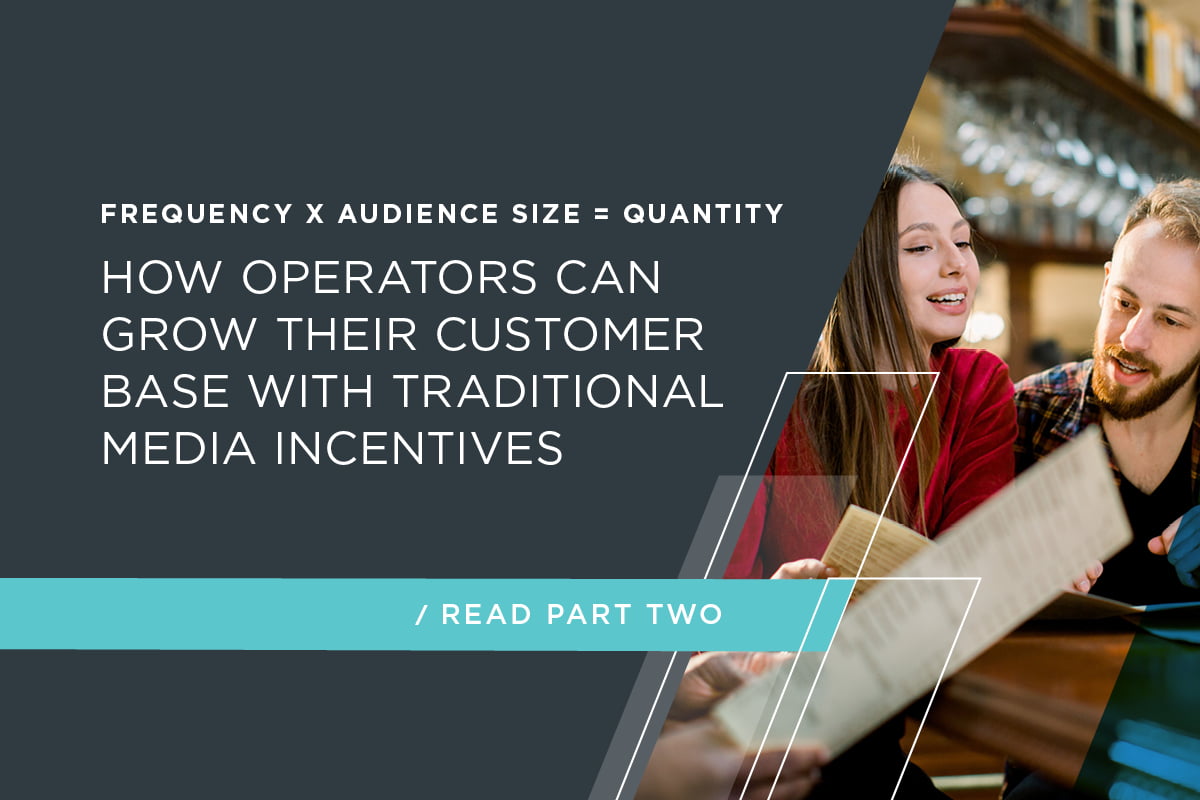Summary
- Budget-conscious consumers respond well to deals to get them to visit a restaurant or order for delivery.
- Direct mail is a proven marketing tool that generates awareness and drives consumers into action.
- Our restaurant case study shows that a direct mail package is an effective option to increase store visits and turn in a substantial ROI.
Restaurants continue to reel from supply chain issues, talent shortages and rising operating costs. In response, many have raised menu prices to help short-term sales, but those increased prices have negatively impacted consumer demand, as restaurant traffic continues to struggle.
Consumers, now facing a financial crunch unseen in decades, are changing their purchasing behaviors — they are eating out less, ordering fewer items or cooking at home more often (despite increased grocery prices as well).
However, people are willing to spend if the right deal comes along. An irresistible incentive could strongly influence them to make a spur-of-the-moment decision to dine out, pick up takeout or order food for delivery.
From a marketing perspective, many times, there is an initial reaction to cut advertising to help save money. But, instead of cutting back on advertising, restaurant marketers should be seizing this opportunity to stay top of mind and drive response with guests.
The effectiveness of direct mail
When it comes to the right media tactics, digital marketing should be part of your strategy, and so should direct mail. Here’s why:
Direct mail is targeted and engaging
Direct mail has proven to be an effective media tactic for brand awareness and customer acquisition by offering direct incentives to consumers’ mailboxes. Some marketers may have misgivings about direct mail because of some common misconceptions. Perhaps they see it as old-school and appealing only to older consumers.
On the contrary, modern direct mail uses the latest technologies to localize targeting and tailor messaging, much like digital marketing does. And younger consumers like millennials do engage with direct mail. Vericast’s March 2022 Awareness-to-Action Study found that 72% of millennials regularly read or look at ads they receive in the mail.
Direct mail influences purchasing decisions
Restaurant brands should include direct mail ads in their multichannel media mix because consumers still rely on print when making buying decisions. Consider these studies:
- 53% of consumers say direct mail influences them to visit a restaurant or order delivery/carryout (Vericast Awareness-to-Action Study, March 2022)
- 40% of consumers feel more positively toward a brand or store offering coupons or discounts (Vericast Deals & Coupons Report)
- 39% are more likely to make a repeat purchase if offered a deal (Vericast Deals & Coupon Report)
- Average response rates for quick service restaurant direct mail ads are around 8%–12% (Vericast Campaign Analytics Data)
- 31% of consumers are more excited to receive their mail each day and 34% spend more time reading direct mail
Direct mail complements digital marketing
Traditional marketing, which includes direct mail, complements digital marketing in the buyer’s journey. There may be a disparity in performance, but it should not be an either-or choice. Each channel has strengths and weaknesses, so they work best when they work together.
- 74% of millennials and 72% of Gen Z will take to the internet for some form of online activity, such as viewing a menu, downloading an app or placing an order after seeing a print ad from a restaurant (Vericast Awareness-to-Action Study, September 2021)
- 46% of consumers who read a direct mail ad are encouraged to go online for more information
- A USPS study showed a 40% conversion rate when direct mail and digital marketing are combined
The proof is in the results
The Vericast Restaurant Data & Analytics Group conducted multiple campaign analyses throughout the pandemic to understand the effectiveness of direct mail. The Save Direct Mail package delivered a value message with incentives such as coupons and promos. The participating brands were able to customize their offers and deliver ads at a neighborhood level. We used foot traffic analyses — mobile location tracking of exposed print consumers to QSR store visits — in a test versus control environment to measure impact.
The study shows significant ROI during difficult economic times for restaurants that leverage the shared mail package to promote their business. Participating restaurant clients saw a 36% lift in total visits for the test locations compared to control sites. Sixty-three percent of visits were from new and lapsed guests (those who have not visited in the past 60 days).
Based on the results, we projected an average campaign ROI of $5.62. This is significant as it is hard to ignore the powerful impact incentives have on traffic and profitable sales during these tough financial times.
Direct mail as part of an omnichannel strategy
As digital platforms such as Connected TV and social media continue to grow in popularity and consumption, marketers have naturally shifted focus — and advertising dollars — to those channels. But we simply cannot ignore the effectiveness of traditional media in the process. Direct mail continues to be a foundation of the media influence landscape and an effective complement to digital ad strategies.
Data-driven direct mail is the next-generation evolution of this century-old marketing tool. Our Save Direct Mail package uses predictive intelligence to discover and reach consumers and their neighborhoods. You get access to over 112 million households across the entire country, allowing you to reach your target market at scale.
Download our Restaurant Report to learn more about how your restaurant can use deals and direct mail to drive more visits to your stores and increase your sales.
Matt Lukosavich has nearly two decades of experience helping to connect brands with consumers. In his current role as restaurant strategy director, Matt is responsible for developing data-driven, client-focused, multi-channel solutions with strategic go-to-market media planning for the restaurant industry vertical. Today, he supports the consumer marketing and planning needs for Vericast accounts totaling more than $200 million.
YOU MAY ALSO BE INTERESTED





